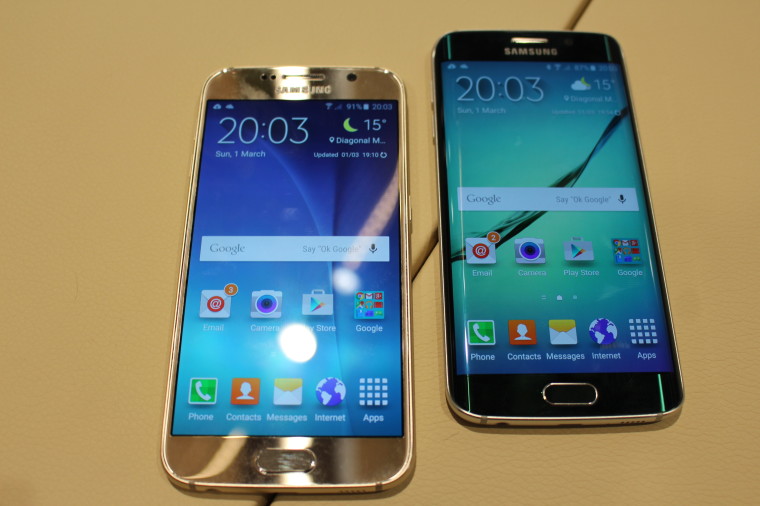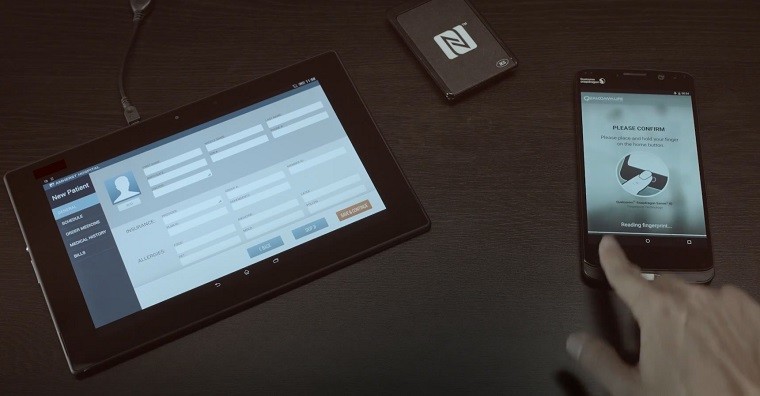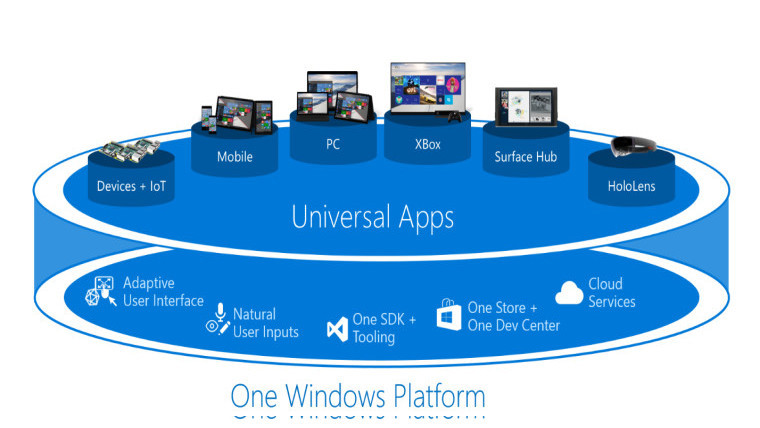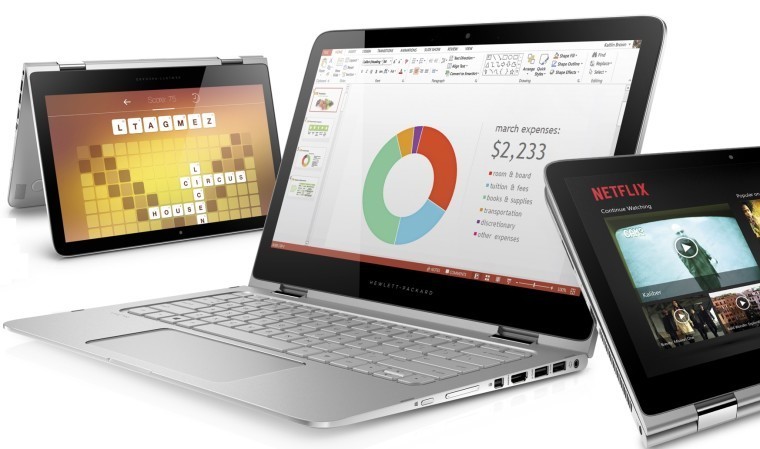7 Days is a weekly round-up of the Editors' picks of what's been happening in the world of technology - written with a dash of humor, a hint of exasperation, and an endless supply of (Irish) coffee.

What a week it’s been. One event has dominated recent headlines – and we were there to soak up the atmosphere and bring you some of the biggest stories. Indeed, that's where we begin our look back on the last seven days: in Barcelona, at the Mobile World Congress trade expo.
MWC is the biggest event in the mobile industry calendar, hosting tens of thousands of visitors from around the world, including many leaders, decision makers and influencers from companies large and small. And as the jewel in the industry crown, MWC is also the ideal launch venue for some of the most exciting devices that are released each year.

So densely packed are the days of the event that some firms have taken to announcing their new products before it even begins. HTC was one example, unveiling its new One M9 flagship on the day before MWC kicked off.
We had some hands-on time with the device, and came away impressed by its rich and vibrant 5-inch 1080p display, premium build quality and 20-megapixel camera – but its two-tone silver and gold bodywork is something of an acquired taste.

Alongside its new Android range-topper, HTC also revealed a fitness band in partnership with Under Armour. The HTC Grip can track workouts, monitor your sleep and connect to social networks.

And in a further collaboration, HTC teamed up with Valve – the company behind the hugely successful Steam gaming platform – to launch a new virtual reality headset, called the Vive.

Like HTC, Samsung also held its main press conference just ahead of MWC, at which it too unveiled its new flagships, the Galaxy S6 and Galaxy S6 Edge. The two handsets share similar high-end specs, including an octa-core Exynos processor, 3GB RAM and up to 128GB of storage.
But it’s the Edge variant that’s the most interesting, with a wild display that curves around both the left and right edges of the device, similar to Samsung’s own Galaxy Note Edge, which it launched last year. However, as we discovered during our hands-on time, while the S6 Edge's unusual display is certainly drop-dead gorgeous, it doesn’t seem to be especially useful.

Oh, and if you buy the ‘standard’, non-Edge version of the Galaxy S6, you’d better make sure you set some money aside to buy a nice case for it, unless you’re a fan of fingerprint smudges.

During our brief hands-on preview with the new Galaxy handsets, we also spotted that they come with a trio of Microsoft apps pre-installed: OneDrive, OneNote and Skype. On Friday, Samsung revealed that Office 365 will be pre-installed with its Knox Workspace suite for Android – the Korean firm’s ‘secure mobility solution’ for business and enterprise.

Microsoft unveiled two new additions to its Lumia range at Mobile World Congress – but to the bitter disappointment of some fans, neither of these was a new Windows Phone flagship. In fact, the Lumia 640 and 640 XL are aimed firmly at the lower mid-range of the market, with quad-core 1.2GHz Snapdragon 400 processors, but they're also equipped with enormous displays.
The 5-inch 640 is dwarfed by its even larger 5.7-inch XL sibling, which also gets a bigger battery and 13-megapixel camera with ZEISS optics.
As we noticed during our hands-on preview of the devices, Microsoft’s new Lumia 640 and Lumia 640 XL are the very first handsets to launch with the newest version of the OS, Windows Phone 8.1 Update 2. The first mention of the update was originally uncovered on Microsoft's site a few weeks ago, and among various changes is a slightly redesigned Settings hub.

Alongside the new handsets, Microsoft also revealed its new Universal Foldable Keyboard. The accessory does as it sounds – it’s a cross-platform keyboard that can connect to (supposedly) any device via Bluetooth, and it folds in half for greater portability.
And the good news for Windows Phone users is that the new keyboard will work with their handsets… as long as they’re running the latest version 8.1 Update 2 of the OS, which will introduce Bluetooth keyboard compatibility for the first time. Microsoft still hasn’t revealed full details of the update, nor has it given any indication of when it might roll out to existing devices.
Microsoft first announced Update 1 (GDR1) back in July 2014 (and then re-announced it as the Denim update for its Lumia devices in September) – but even now, that update is still trickling out to devices. At that same pitiful rate of progress, some users will be lucky to see Update 2 by next winter – and let’s not forget that Windows 10 for phones is supposed to be arriving in the next few months too.

Indeed, Microsoft actually spent some time at its MWC press conference talking about what’s to come in Windows 10 for phones, sharing a few previously unseen bits, including a quick look at its new Bing Maps app, demonstrating improved integration and continuity between the phone and PC versions.

The company also shared a fleeting glance at its new Project Spartan web browser running on Windows 10 for phones for the first time.

Microsoft has now confirmed that Spartan will be included in the next Windows 10 Technical Preview for PCs, which could arrive as early as next week. On Thursday, a bunch of screenshots emerged showing Spartan in action on the desktop.

There have been plenty of screenshots to feast upon this week, showing builds 10022 and 10031 of the Technical Preview in action, revealing a couple of tiny tidbits of info here and there.

By the way, Microsoft confirmed on Monday that there are now over 2.8 million people on its Windows Insiders program, testing the latest builds of Windows 10 as its development continues.

However, a well-placed and trusted source revealed to Neowin last weekend that the number of devices running the Windows 10 preview for phones is much, much lower than that – only around 60,000 users worldwide, including Microsoft employees.
That number should grow considerably in the coming weeks, as Microsoft’s Gabe Aul confirmed that the next preview build for phones will support a wider range of handsets. Currently, the preview is limited to just a small subset of low- and mid-range Lumia devices.

However, Microsoft also confirmed what should really come as no great shock to any of you: there will be no new Lumia flagships until Windows 10 finally launches. Anyone surprised? Probably not, since it makes sense for the company to launch its latest and greatest handsets with its next-generation OS.

The prospect of a new flagship-class Windows phone is a tantalizing one for some. Last month, Microsoft whet the appetites of its fans when it revealed that “Lumia smartphones powered by Snapdragon 810 processors” are on the way.
But on Monday, Intel hinted at the possibility of its new Atom x3 chipset launching on Windows 10 phones, saying that working to bring such devices to market is “very important” for the company, although it won’t launch 4G-enabled versions of its new chips until the second half of the year.

Still, the Snapdragon 810 will surely provide more than enough processing power for most users of the new high-end Lumias. But this week, Qualcomm began teasing its next-gen Snapdragon 820 SoC, featuring innovations such as fingerprint reading through the touchscreen digitizer, along with new machine learning capabilities via the company’s Zeroth cognitive computing platform.

We got a glimpse into the future of Microsoft’s server plans this week too, although not by the company’s choice. A leaked slide deck revealed Microsoft Nano Server, describing it as “a new headless deployment option for Windows Server”, and the “nucleus of [its] next-gen cloud infrastructure and applications”.

But Microsoft did volunteer some new info about its growing Universal Apps strategy, across ‘One Windows Platform’. As the launch of Windows 10 approaches, we’re seeing that strategy gradually coming together around a single Windows app store, one flexible and extensible set of developer tools, and software developed with an ‘adaptive UI’ to ensure that the appropriate interface is always available to the user, regardless of the size and type of display they’re using.

The company also showed off a bit more of its own Office Universal Apps for Windows, including some brief views of the new apps running on phones…

…but there was much bigger news on the Office front this week, as Microsoft announced Office 2016 for Mac Preview on Thursday. The preview is free to download and available now, and includes new versions of Word, Excel, PowerPoint, OneNote and Outlook for Apple’s PCs.

HP unveiled some new hardware this week for those seeking a high-end Windows convertible with decent battery life. The HP Spectre x360 offers up to 12 hours' battery life, and comes with a 13.3-inch Full HD display, 256GB storage, 8GB of RAM and 2.2GHz Intel Core i5 (Broadwell) processor – but for those with even more premium tastes, a Core i7 model with 512GB SSD and Quad HD display will also be available.

Acer returned to Windows Phone this week, years after abandoning the platform to focus on Android devices instead. Like many of the other manufacturers who have signed up to launch new Windows handsets in recent months, Acer’s return begins at the very lowest end of the market, with the new Liquid M220, priced at just €79 EUR off-contract.
We had some time to take the device for a quick test-drive, praising the company for its stylish, restrained design – rather than launching another ‘me-too’ Lumia clone – but the viewing angles on its washed-out screen were genuinely awful.

At the other end of the market, Lenovo launched its Vibe Shot handset at MWC – a device that has a strong focus on photography, if you’ll pardon the pun. The Android 5.0 device is certainly attractive, especially from the rear, and while it’s not quite a range-topper, its octa-core Snapdragon 615 processor should prove more than adequate for the needs of most users.
In our hands on with the Vibe Shot, we discovered plenty of interesting touches for those who love to take pics, including a physical switch on the device to engage the ‘pro’ camera settings, a ‘selfie flash’ bulb that plugs into the headphone jack, and a selfie app that tries (and horribly fails) to guess your age, and how happy you are.
No, Lenovo, I’m NOT 36 years old, damn you. *shakes fist*

Huawei unveiled its first Android Wear device at MWC, the somewhat literally-named ‘Watch’. Featuring a round 1.4-inch 400px-diameter AMOLED, protected by sapphire crystal, the device also includes a 1.2GHz Snapdragon 400 processor, 512MB RAM and 4GB of onboard storage. But in a crowd of increasingly similar wearables, Huawei has made an effort to stand out with some interesting design details, intended to make the devices look less like smartwatches and more like an ‘ordinary’ wristwatch.

Meanwhile, Google’s Sundar Pichai confirmed this week that the company will become a wireless provider, as a ‘virtual operator’ (or MVNO) using the physical network of one of America’s established carriers. Google is presenting its plans as an opportunity to show carriers 'what’s possible’, citing one example of automatically reconnecting two users in the event that a call is dropped. However, its longer-term plan for this latest endeavor remains somewhat less clear.
Google has already been dabbling in providing connectivity to users through its Fiber fixed-line broadband service in parts of the US, as well as experimenting with airborne Wi-Fi antennas as part of its ‘Project Loon’ efforts.

But the news wasn’t quite so good this week for Google+, which is being broken up into several chunks, including Photos and Streams. Despite Google’s (often cringeworthy) efforts to present G+ as a legitimate social network in its own right, most users simply didn’t care about its social functions when their friends and family were all hanging out on Facebook and Twitter.

For games developers, enthusiasts, educators and anyone else with an interest in gaming, Epic Games made a stunning announcement this week, when it revealed that Unreal Engine 4 is now free for anyone to download, dropping its $19-per-month subscription requirement. The company will take a cut of 5% of your gross revenues every quarter if you use the engine to develop a commercial product, but only after the first $3,000 of revenue on each product you launch.

And there was great news for Xbox 360 owners on Tuesday too, as Microsoft announced the launch of a new Preview Program for owners of that console, giving early access to new features, fixes and other improvements before they’re officially released.

Microsoft shared even more on its gaming plans at the Game Developers Conference in San Francisco this week, including details of its new Xbox Live SDK for Windows 10, a new Universal Development Center for creating cross-device gaming experiences, and more information on DirectX 12.

One detail not announced at GDC – but which Neowin exclusively revealed on Wednesday – is that Microsoft has been working on a new ‘hardcore’ controller for the Xbox One. While we know the controller is in development, it’s not yet confirmed for production, although we understand its announcement has been pencilled in for the E3 2015 games conference in June.

We had a quick look around Microsoft’s booth at GDC…

…although it wasn’t anywhere near as impressive as the company’s exhibition stand at Mobile World Congress. I mean, look at it - it's got its own hot air balloon, which has a DJ booth in the basket. #win

To give you a flavor of what some of the biggest tech brands actually use their display areas for at events like MWC, we also brought you a quick look at the Sony stand…

…and that of HTC, where its new One M9 was the main attraction…

…as well as paying a visit to LG, where the company was showing off smart kitchens, smart mirrors, smart cars and even smart shoes – as well as its latest curved smartphone, the LG G Flex 2.

By the way, don't forget that this weekend, we're giving away a Samsung 11,300mAh portable power pack, capable of recharging your devices many times over! Available to our readers across the globe, the contest ends on Sunday, March 8 at 2300 PST – so make sure you enter ASAP!

And if you’ve got a PlayStation 4, check out our other giveaway this weekend, in which you could win one of three downloadable codes for Zombie Army Trilogy!

The sun has finally set on Mobile World Congress in Barcelona for another year, but it was a hell of a show, and we can’t wait to get our hands on some of those beautiful and intriguing new devices that were revealed there.
Stay tuned to Neowin in the days, weeks and months ahead for more on those. For now, have a great weekend!

















-1 Comments - Add comment